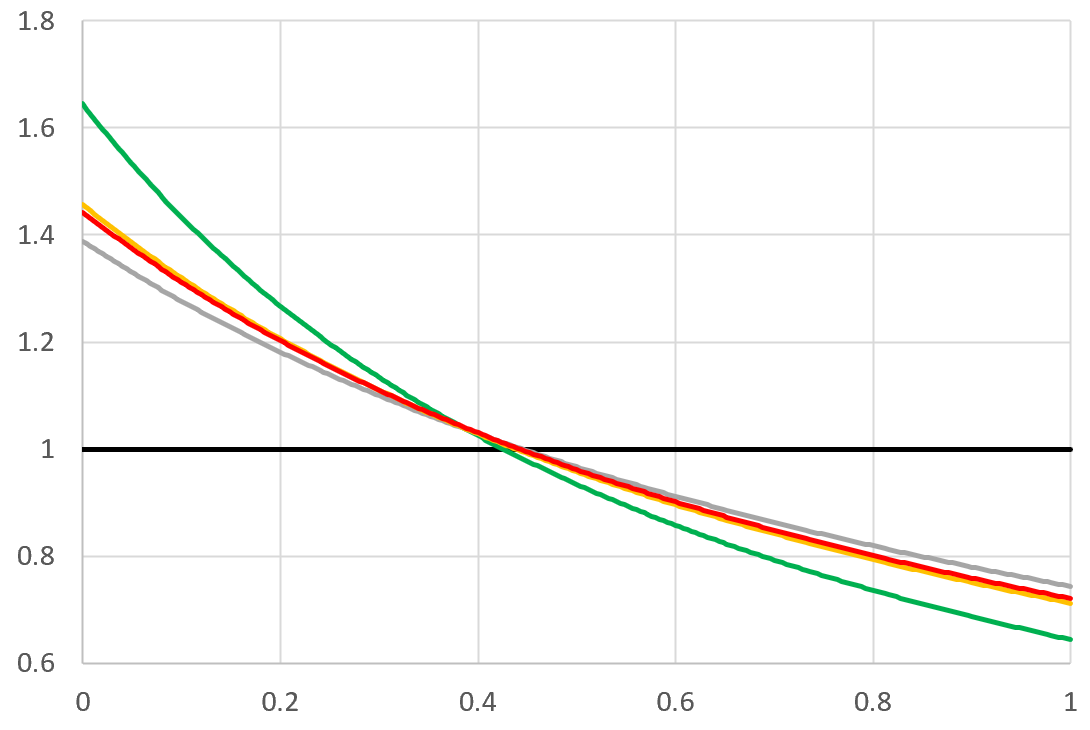Let us consider the sequences $(x_n), (a_n)$, starting with $n=0$ and $x_0\in ]0,1[$, defined by the following generalized Gaussian map: $$x_{n+1}=\frac{\lambda_n}{x_n^{\alpha_n}}-\Big\lfloor \frac{\lambda_n}{x_n^{\alpha_n}}\Big\rfloor, \mbox{ } \mbox{ } \mbox{ } a_n=\Big\lfloor\frac{\lambda_n}{ {x_n^{\alpha_n}}}\Big\rfloor$$
where $\lambda_0,\lambda_1\dots$ and $\alpha_0,\alpha_1\dots$ are positive real numbers. For convergence and to make sense, they must satisfy some conditions not discussed here. Continued fractions correspond to $\lambda_0=\lambda_1\dots=1$ and $\alpha_0=\alpha_1\dots=1$. Generalized continued fractions correspond to $\alpha_0=\alpha_1\dots=1$.
The number $x_0$ can be reconstructed using the following infinite backward recursion, starting with a large $n=N$ and replacing $x_{N+1}$ by $0$, and then iteratively going down to $n=0$. $$x_{n}=\Big(\frac{\lambda_n}{a_n+x_{n+1}}\Big)^{1/\alpha_n}$$ Convergence is very fast, so even $N=30$ will give you more than 15 digits of accuracy for $x_0$, depending on the parameters.
This is the same scheme used to compute $x_0$'s continued fraction, and it will produce the same traditional continued fraction if all $\alpha_n$'s are equal to $1$. Here I assume $\alpha_n=\alpha, \lambda_n=\lambda$: they do not depend on $n$.
My question
The behavior of $a_n$ (these are the $[a_0,a_1,\dots]$ in the continued fraction expansion of $x_0$) is very chaotic for most numbers, but if you replace $\alpha$ by a value lower than $1$, it seems that the coefficients $a_n$ are bounded, or at least their expected value is not infinite anymore. The equilibrium distribution for $(x_n)$ if $\alpha=\lambda=1$ is well known and equal to $$F_X(x)=\log_2(1+x), \mbox{ } \mbox{ } \mbox{ } \mbox{ } 0\leq x \leq 1.$$ All this relate to ergodic, chaotic dynamical systems associated with numeration systems, the base-$10$ system being based on the tenfold map, while the system described here is based on a generalization of the Gauss-Kuzmin-Wirsing operator (see here and here). The coefficients $a_n$'s are called the digits.
I am wondering is this could lead to interesting results about approaching irrational numbers by other rational or irrational numbers. For instance, if $\lambda=1,\alpha=9$ and $x_0=\pi-3$, you get, with just one iteration,
$$\pi-3\approx (43715304)^\frac{1}{9},$$
correct to $9$ digits. Also, what are the conditions for convergence? What are the conditions on $\alpha,\lambda$ so that the $a_n$'s are bounded or have finite expectation? Is there a simple expression for $F_X(x)$ or its derivative (the density) $f_X(x)$ when $\lambda\neq 1$ or $\alpha\neq 1$?
Convergents
To simplify the notation, let $\mu_k=(\lambda_k/a_k)^{1/\alpha_k}$. Here is how the three first convergents of $x_0$ are computed if you only know the digits $a_0,a_1\dots$ and try to reconstruct $x_0$:
$$\mu_0$$
$$(\lambda_0/(a_0+\mu_1))^{1/\alpha_0}$$
$$(\lambda_0/(a_0+(\lambda_1/(a_1+\mu_2))^{1/\alpha_1}))^{1/\alpha_0}$$
Update on 2/17/2021: I provided a way to iteratively solve the functional equation to find the equilibrium density, see the last section in my answer.

